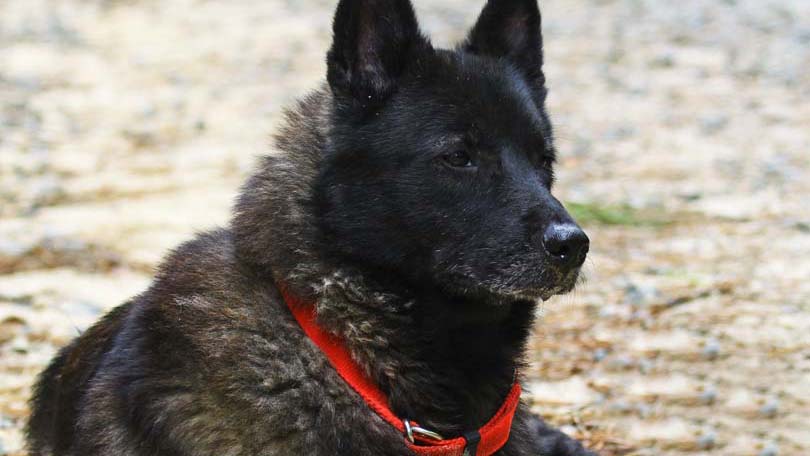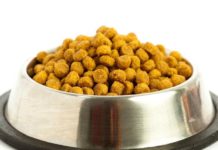
His muzzle is greyer then before and his gait is a bit slower then it once was not that long ago. Otherwise, he is still the faithful companion he has always been except now you are beginning to realize he is getting up there in years. Is there more you can be doing to see him comfortably into his older years in comfort and dignity? Definitely!
Feeding the older dog correctly is the single most important thing you can do for your senior pooch. As dogs age, their calorie and nutrient requirements change much like ours do and with the wide variety of healthful seniors diets on the market, it only makes sense to give your beloved canine every feasible advantage you can, allowing them to live the longest, healthiest and happiest life possible.
At what point a dog becomes a senior depends on the size of the dog. Small breeds are considered senior at around nine years old, medium and large are at seven years old and giant breeds are senior citizens at five years old. Old age is not classed in just the physical age of the dog either – it is cumulative of many different aspects of the aging process. Some breeds are unique such as the medium-sized Bulldog that has a lifespan of only nine years meaning they are considered a senior dog at around five or six years old. Dogs that suffer from chronic conditions such as epilepsy, colitis and diabetes also age at an accelerated rate as do dogs that have been in an accident that resulted in one or more broken bones due to the advanced progression of arthritis.
Other indicators of advancing years include:
- More grey on the muzzle
- Unable to hold bladder as long
- Less energy; tires more quickly
- Developing lumps and bumps
- Loss of hearing
- More easily agitated
- Getting ‘lost’ in their own yard or house
What are Senior Diets for Dogs?
Senior diets differ from regular adult foods in several ways. Protein levels are lower as are levels of sodium and phosphorus so there is less workload put on the kidneys. This also helps to regulate blood pressure and overall heart health. Senior food is generally more calorie dense as appetite decreases with age so the older dog can eat less volume of food but still maintain the same or only marginally lower caloric intake. Ingredients lean towards the more highly digestible foods and steer clear of ingredients that are hard on older digestive tracts i.e. less beef and wheat, more chicken and rice. There may also be an increase in vitamins and minerals in the food as older digestive systems do not process nutrients as easily. Senior diets have a higher degree of palatability because as dogs age, their sense of smell and taste decrease so it takes more to interest them in their meal. Senior diets are also formulated with increased levels of certain nutrients – glucosamine hydrochloride for joint health for example. There is even a brain diet developed to help with Cognitive Dysfunction and other aspects of neurological aging.
For the typical, healthy older dog, a general senior’s diet should suffice in sufficiently slowing down the hands of time. Always buy the best quality food you can afford as the range of quality between brands is staggering. However, if your dog has a previously diagnosised condition that may require or benefit from a specific type of food, talk to your vet about what other foods are available that may work better for him. Often anticipating medical conditions and feeding accordingly can make a big difference in the speed and severity of the problem. For example, if you have an active, eight year old Australian Shepherd that you have done agility with for the dog’s entire life, you can anticipate a greater amount of joint wear and tear then the average Aussie would experience. Why not feed him a joint diet formulated to alleviate the symptoms and discomfort associated with arthritis? Or what about the six year old Labrador that was hospitalized for acute renal failure after ingesting some rat poison? Putting her on a Kidney Diet to lessen the load on her once compromised kidneys will help immeasurably in the long run. Only make these changes with your veterinarian’s consent but do talk to him about ways to combat old age in your senior dog.
How you feed your senior can also make a difference. Older dogs do better on smaller, more frequent meals so breaking their food intake into three meals versus two is a healthier choice for them. Some owners switch to canned food as the dog ages because they are worried about their old teeth and kibble. Instead, try adding some warm water to the kibble and letting it soak for a minute – the heat and gravy combo will entice your dog to eat and the added water content is invaluable for overall health. You can also add a bit of canned food to their kibble if you feel it necessary however watch their stool, soft food can cause diarrhea in some dogs. Watch your dog’s weight and instead of feeding a certain quantity each day no matter their waist line is doing, instead feed to the condition they are in that day. So, if it looks like they are gaining a few pounds, feed a little less but if they are looking thin, add a few extra kibbles. Most owners do not notice weight gain or loss until there is a marked difference. Instead, use this feeding method to maintain their ideal weight consistently versus the need to react dramatically in one direction or the other.
Your best friend is getting up there in years but the last few years can also be the best ones together. Senior dogs have a character and style all their own making them fun and interesting companions even if they cannot chase the Frisbee for as long or take as long of walks. Enjoy the senior years together and feed your dog right to let them be long and happy ones!





